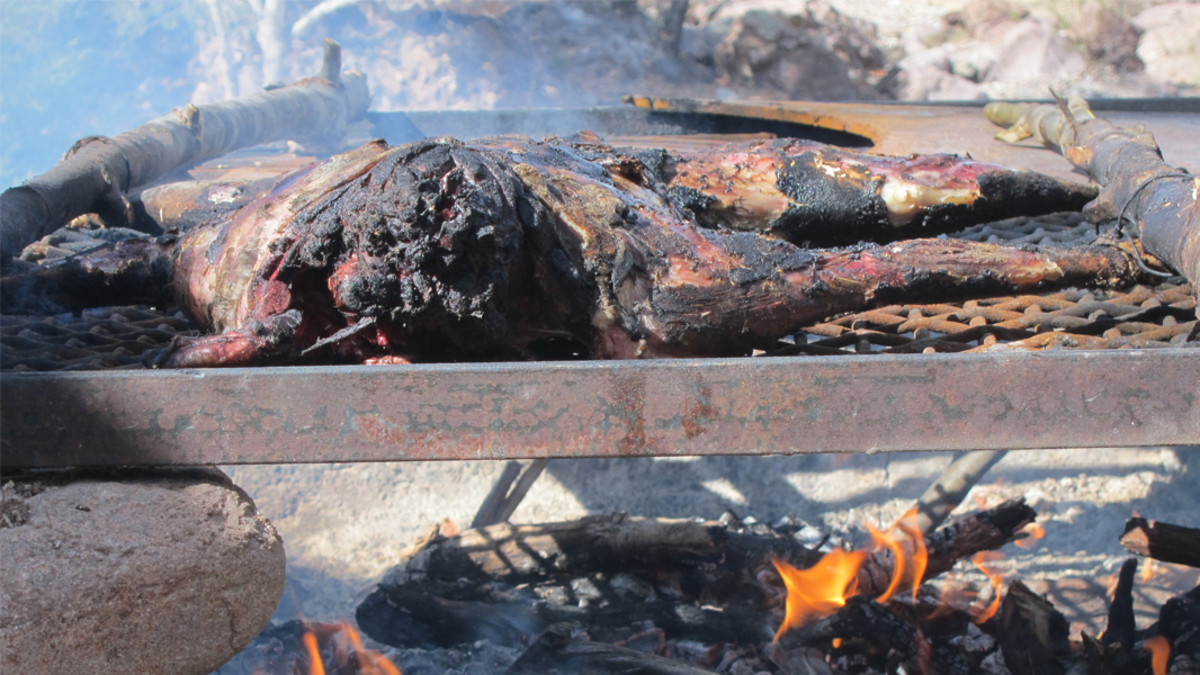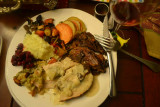
The summer grilling season is here. When done right, grilled venison is a familiar and tasty preparation that everyone, even those new to eating deer or elk, will enjoy. But, before you fire up the grill, take the time to ensure you’re doing everything you can to make the best meal possible.
Choose the Right Cut
Not just any cut of venison will work well on the grill. While it’s tempting to serve your guests small, individually cooked portions of meat, it’s actually more difficult to cook such cuts to perfection. Small pieces of backstrap or tenderloin can transition from rare to well-done in seconds while cooking on a hot grill. Bigger cuts of meat make it much easier to control the cooking process to avoid dry, overcooked meat.
Leave tenderloins whole and grill your backstraps in larger, 10- to 12-inch pieces. Sirloin or round steaks should be fairly thick, in the range of 1½ inches. Or better yet, grill these cuts as whole roasts. Venison roasts from the upper portion of the rear leg are ideal grilling cuts. Top and bottom rounds, eye rounds, sirloins and triangle roasts are all good choices for summer cookouts. Tougher cuts, such as shoulder roasts, shanks, and necks are best reserved for slow-cooking.
Add Some Fat
Venison is lean, which means it is apt to dry out on the grill. Coat your game meat with olive oil before cooking in order to help it sear and retain internal moisture. The oil also adds a bit of fatty flavor that lean venison cuts lack.
While it’s popular to use wraps of bacon for this purpose, meat prepared this way tends to tastes more like bacon than venison, which defeats the purpose of cooking wild game. Regardless of the fat that you choose, always be on the lookout for grease fires while you’re grilling. Soot and smoke from grease fires can tarnish an otherwise splendid cut of meat.
Marinades and Spices
You certainly don’t need to marinade venison, we seldom do it, but a good marinade can add enjoyable layers of flavor to your meat without masking the natural flavors. Try to avoid heavy marinades like Italian dressing; instead, keep your marinades simple with light flavors.
A mixture of olive oil, minced garlic, a little lime juice and a couple of your favorite spices are really all you need to make a good marinade. Always use salt and black pepper and try cajun seasoning or smoked paprika. Since mild marinades don’t really tenderize meat, there’s no reason to add your venison to a marinade well before cooking. A half-hour soak is more than enough.
Cook it Right
Whether you’re a tried and true lover of charcoal grills or you appreciate the convenience of gas, it’s important to cook over high heat. Fast and hot is the best way to grill venison steaks and roasts to the perfect rare to medium-rare doneness. I’ll leave it up to you whether you choose to keep your grill lid open or closed, but don’t ever leave your grilling area for long. And remember, a closed grill will cook meat much faster. It’s a good idea to keep a meat thermometer on hand to frequently check the internal temperature of your venison.
Make sure to get a good, crusty sear on both sides and then pull the meat from the grill as soon it reaches 125 degrees on the inside. If you’re a gas grill user looking for that smoky charcoal flavor, consider adding a small aluminum pie tin filled with hickory or apple wood chips to your grill. Allow the wood chips to smolder while your meats cooks and you’ll add a smoky flavor to the finished product.
Rest the Meat
Once you’ve pulled the meat from the grill, you need to let it rest. Set it on a plate or platter and leave it alone at room temperature for about ten minutes. Don’t tent it with foil. Don’t put it in a warm oven. Just let it sit and do its thing all alone for a little while.
During the resting period, meat undergoes a mysterious process during which the cooking process slows and stops, the internal juices redistribute themselves, and the meat relaxes. The end result is a juicy, delicious piece of perfectly grilled venison. Don’t skip this step.
Thin to Win
After the meat has had a chance to rest, it’s best to serve grilled venison in thin slices. Whether you’re grilling deer or moose, venison has a chew factor that farm-raised beef lacks. Thin slices don’t take forever to masticate so you can enjoy the flavor and texture and move on to the next bite. Always slice against the grain for the easiest chew. You can even pre-slice and plate the meat, and add your garnish or sauce before serving your guests.
Garnishes and Sauces
It’s not necessary to serve grilled venison with garnishes or sauces. But as long as they don’t overpower the natural flavors of the meat, garnishes and sauces can be a welcome addition. For a garnish, it’s hard to beat a simple gremolata. This mixture of minced lemon zest, parsley, garlic, and a little olive oil combined with a sprinkle of salt and pepper is perfect for rare, thinly sliced meat.
For sauces, venison pairs well with berries and red wine. Make a simple sauce by cooking a tablespoon of minced shallots in a few tablespoons of butter. Add a cup of stock and reduce by half. Add a cup of red wine and reduce by half again. Next, add a half cup of blueberries, blackberries, or berry jam to the mixture. Add salt and black pepper and then reduce until the sauce sticks to the bottom of a spoon. I like to make my sauces in advance so that I can focus on the grill rather than being distracted while I’m cooking the meat. At serving time, just drizzle the warmed sauce sparingly over your grilled venison.
Side Dishes
Keep your sides light. A simple garden salad is perfect. Grilled tomatoes, potatoes, bell peppers, or asparagus are also good choices. Of course, thinly sliced and twice-fried French fries are a major hit with kids.
Grilled venison is the ideal summertime wild game meal. But, you’ve got to treat grilled venison the right way in order to get the best out of your meat. Before you know it, fall will be here and it'll be time to restock the freezer for next summer’s grilling season.





